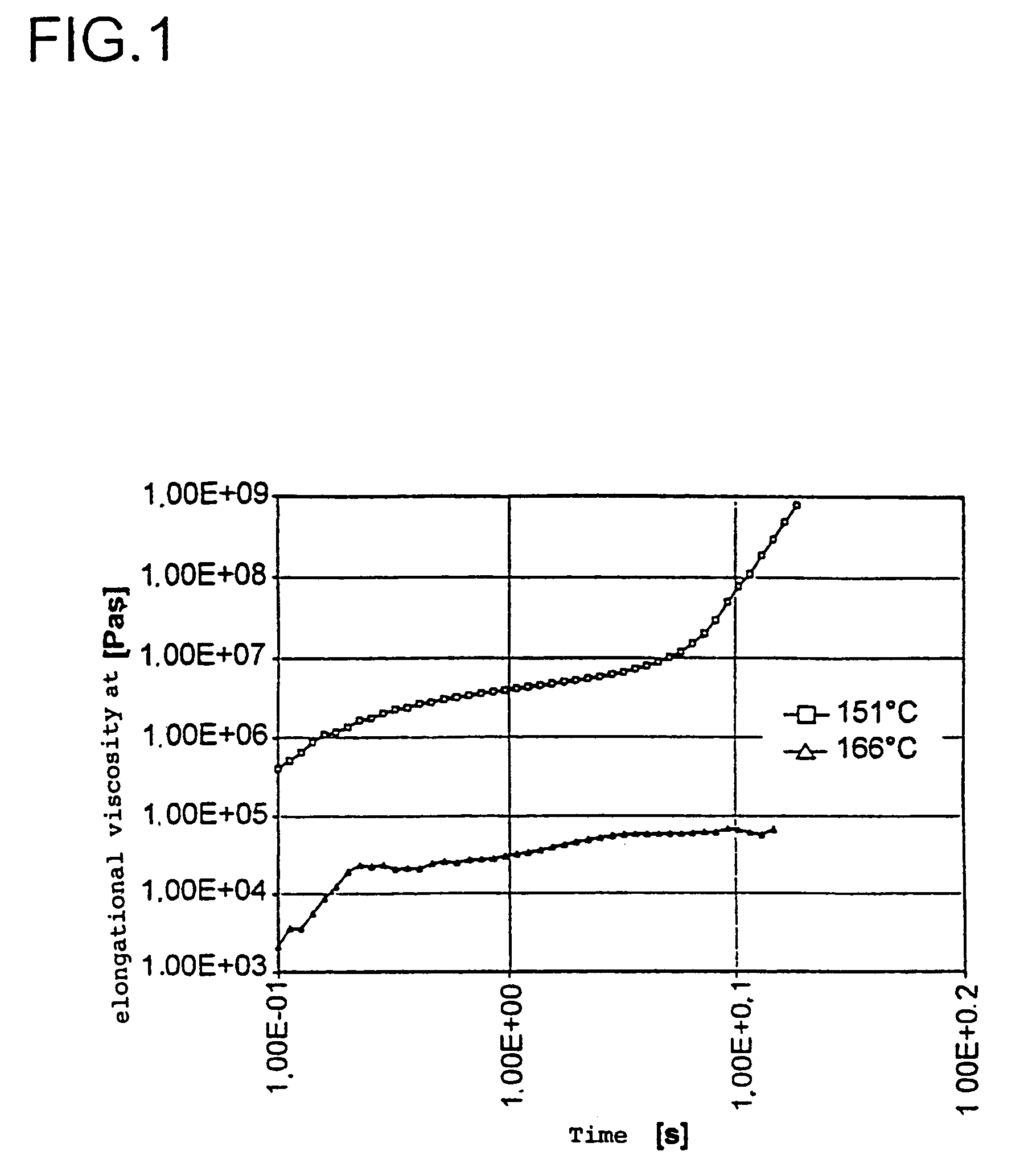Random propylene copolymers
a propylene and copolymer technology, applied in the field of random propylene copolymer, can solve the problems of insufficient processability of conventional propylene homopolymers, trouble-free production process, and disadvantages of film production from these materials in stiffness, and achieve improved processability, high stiffness, and toughness
- Summary
- Abstract
- Description
- Claims
- Application Information
AI Technical Summary
Benefits of technology
Problems solved by technology
Method used
Image
Examples
example 1
[0142]i) Preparation of the Titanium-Containing Solid Component a1)
[0143]In a first step, a finely divided spherical silica prepared by spray drying and having an average particle diameter of 45 μm, a pore volume of 1.5 cm3 / g, a specific surface area of 260 m2 / g and a water content of 2.7% by weight was mixed with a solution of n-butyloctylmagnesium in n-heptane. 0.3 mol of the magnesium compound was used per mole of SiO2. The finely divided silica gel also featured an average particle size of the primary particle of 3–5 μm and cavities and channels with a diameter of 3–5 μm. The macroscopic volume fraction of cavities and channels was about 15% of the entire particle. The solution was stirred at 95° C. for 45 minutes and then cooled to 20° C., and a 10-fold molar amount of hydrogen chloride, based on the organomagnesium compound, was then introduced. After 60 minutes the reaction product was mixed with 3 mol of ethanol per mole of magnesium, with continuous stirring. This mixture w...
example 2
[0155]The titanium-containing solid a1) described was used to prepare a random propylene-1-butene copolymer and, as described in Example 1, this was processed to give a biaxially stretched film of about 20 μm thickness. The polymerization conditions and the polymer properties and film properties measured are likewise listed in Tables 1 to 3.
examples 3 and 4
[0156]In each case, the polymerization of the propylene copolymers took place with the titanium-containing solid a1) described above. The polymerization properties and the polymer properties measured are given in Tables 1 and 2.
PUM
| Property | Measurement | Unit |
|---|---|---|
| temperature | aaaaa | aaaaa |
| temperature | aaaaa | aaaaa |
| temperature | aaaaa | aaaaa |
Abstract
Description
Claims
Application Information
 Login to View More
Login to View More - R&D
- Intellectual Property
- Life Sciences
- Materials
- Tech Scout
- Unparalleled Data Quality
- Higher Quality Content
- 60% Fewer Hallucinations
Browse by: Latest US Patents, China's latest patents, Technical Efficacy Thesaurus, Application Domain, Technology Topic, Popular Technical Reports.
© 2025 PatSnap. All rights reserved.Legal|Privacy policy|Modern Slavery Act Transparency Statement|Sitemap|About US| Contact US: help@patsnap.com



